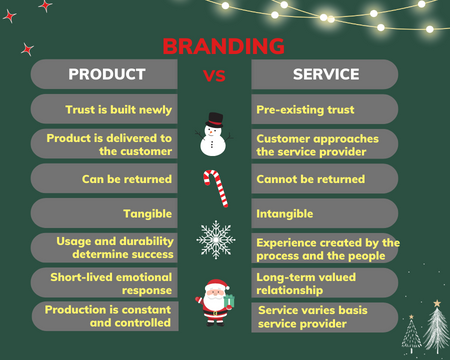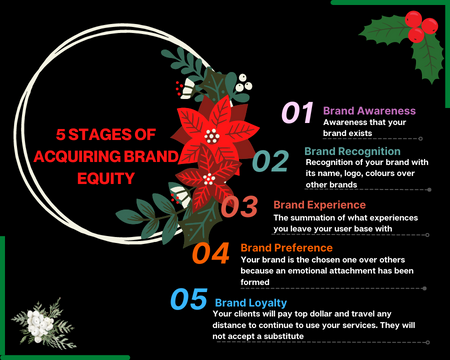Introduction
Indian law firms and lawyers use branding, marketing, and practice development as ways to gain an audience with potential clients and existing ones. As a community, we are far more sensitive to and aware of these aspects that contribute towards our larger practice goals.
Team TGM is talking to you about branding, in a 2-part series. In the first part, we are starting you off on some basics around brand and brand equity.
In the three-sector economic theory, though service sectors are considered tertiary, the services sector is the largest sector in India. The services sector accounts for 53.89% of total India’s Gross Value Added (GVA). Lawyers and law firms, as service providers, are a key agency to build and generate national wealth, making them an important player in the economic construct of the country.
What is branding?
A brand is a result. It is a customer’s gut feeling about a service, product or company. While your name, logo, colours, typography, story-telling, client testimonials, and pitches –are all components of your brand, your brand is in fact, a summation of these translated into a customer’s feeling!
It is recommended that brands start by asking the pressing question “what is our purpose?” and then build a brand narrative befitting that.
“A brand is a business reputation. So, each time you create a brand, you are creating as many brands as customers you have. Because each customer will form a different opinion”
-Marty Neumeier, American Author and Branding Expert
Product Branding vs. Service Branding

As lawyers, we provide services and this makes our feat slightly different than our counterparts who brand products.
A product is tangible – you can touch it.
A service is intangible – it is a feeling. An experience.
A purchaser of a service has already bought into your brand, prematurely reposing trust, basis an impression they have made. The branding piece for lawyers becomes pertinent in this context. Branding dictates how your clients feel, and the mention of your name will evoke an emotional response ever so often.
“A strong brand helps a law firm connect with its target clientele and consequently also helps in generating new businesses.
Building a law firm’s brand doesn’t happen magically, it is a process and part of a well-designed marketing strategy.”
-Cecilia Barreo, Business Development & Marketing advisor to Law Firms
A luxury yacht owner was once telling the staff aboard, that the only reason their guests pay top dollar is to come to the yacht for the “experience”. That “experience” often commenced when the guests book their tickets and create a visual of what vacationing on this yacht would feel like.
Prompt: Think of your favourite law firm brands. Are they domestic or international? What is the one obvious quality that distinguishes them? What is it about their “branding” that appeals to you?
Service industries will often see repeat clients, basis a deeper emotional connect and copious amounts of faith clients repose in the service provider. Client involvement, commitment, and client trust are key factors to have them coming back.
Prompt: Think of your go-to doctor or tailor or hair dresser. Will you work with a substitute? If not, why so?
Oftentimes, we enjoy a great service experience, we will go back for more with faith that they will deliver. Lawyers are, after all, in a people’s business, and the strongest relationships are those that we care for personally and nurture with care. Delighting our clients and delivering on the brand promise is an essential element of successfully building a service brand.
What is Brand Equity?
Kotler and Keller (2016) defined brand equity as, “the added value endowed to products and services with consumers. It may be reflected in the way consumer think, feel, and act with respect to the brand, as well as the prices, market share, and profitability it commands.”

If we were to work with examples of well-known consumer brands, we know that McDonald’s signifies fast food, is children friendly, and encourages adults to also indulge the child within! We know that the Tata Group enjoys a certain reputation with its customers, from pin to plane – when the Tata name is involved, customers seem to feel assured. Nike and Apple are brands that come to mind when we want to evoke positive customer emotion for products that are durable and post-sales services that are reliable.
The big 4 consulting firms feature in the annual report published by Brand Finance in 2022, as the world’s most valuable and strongest brands. These brands invest in their brand integrity and authenticity, rendering them invincible. They use the agencies of people, processes, and culture to promote themselves to both internal and external stakeholders. They emerge triumphant as brands, because of their brand equity – both on the client and candidate side. Attracting new talent and new business is a natural phenomenon that follows.
Branding Magazine drew up this interesting infographic to elucidate what each of the big 4 stand for
On the law firm side, Baker McKenzie has been on top of the branding list that Thomson Reuters released for law firms, globally. You can access the report here.
The Future
“Branding builds emotional connections and trust with the firm’s target clientele. Moreover, if a potential client decides to hire a law firm and the law firm complies with what its branding promises, that client will remain loyal to that firm.”
– Cecilia Barreo
In a post-pandemic world, people are searching for meaning in their lives and as a result, the companies that show a higher purpose stand to propel themselves forward. It is imperative for the C-suite or management to have a buy-in to the brand narrative and communicate it effectively.
“Tell stories about your services, but also elucidate how you will leave the world a better place.”
– David Akaer, Father of Modern Branding
The Future of Purpose Driven Branding, authored by Akaer, talks about “signature brands” being those that can tell a story about the things they are doing to help businesses.
An outstanding example of Lifebuoy, a bar soap, housed under the Unilever brand is the number one brand outside the US market.
In India, they developed a program called “help a child to reach 5” because 2 million children died before the age of 5 owing to germ borne diseases. They ran this program across villages in India and made videos that got up to 44 million views! Sales multiplied and faith in the brand was reiterated.
If you are picking a cause for the larger social or economic good (of the firm), make it authentic, close to your service offering, and commit to commit, for a long-term period.
An excellent example of a law firm that has used branding is Linklaters, who launched the “clear blue water” in 2004 to put them at the forefront of global law firms. In the late 90s, when many City law firms had begun their international expansion, Linklaters formed an alliance with many leading European law firms, and later merged with three. Under the leadership of the then managing partner, Tony Angel, Linklaters pursued rapid global expansion, which saw the percentage of UK-based partners half from 80 to 40 between 2001 and 2004. The ‘Clear Blue Water’ strategy went on to become a case study at Harvard Law School and a blueprint that many firms followed.
In 2009, Barclays was the least trusted brand, in the least trusted industry, in a post-recession world. In February 2013, the Barclays Group CEO announced that the company would dramatically change and assume a new brand purpose: “Helping people achieve their ambitions — in the right way.”
This reformulated purpose, supplemented by new community programs and fresh brand communication helped the brand resurrect itself. Their employees executed about 40 programs, including “Digital Eagles”, “Tea and Tech”, and “Code Playground” to help navigate digital for finance, financial literacy, and tech. The brand shifted consumer perception by amplifying the stories of real people who were impacted by the programs and altered conversations by providing a more positive narrative about the brand. Slowly but surely, the old notions surrounding the brand were shed, making room for a renewed brand identity in the minds of consumers.
If you are considering rebranding your brand and its purpose, make sure it is well thought through, aligns with your larger goals, and is conducted with authenticity. Some of the General Counsels we spoke to said, that the international counterparts of Indian law firms, were invested in something deeper. They were building conversations which have far reaching impact, on the world at large.
Indian law firms are becoming more sensitive, but they still rely heavily on promoter relationships and pureplay work-for-money model, which is the antidote to building long-lasting brand equity. Law firms need to make a long-term commitment to building credibility, as brands. The future for branding at law firms, is bright, for an industry that is at a relatively nascent place in its branding journey.
We hope you will stay tuned for part 2 of this series, where we will bring industry insights from your clients and international counterparts. Until then, Happy Holidays!
P.S. Turn off your email notifications.